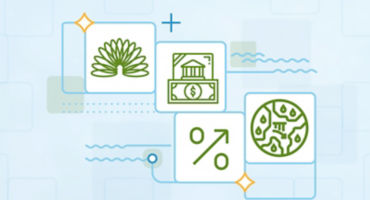For a higher-inflation world — Thematic allocations may also help with other portfolio construction goals such as inflation mitigation — a goal that is likely to be of increasing interest to investors against a backdrop of structurally higher inflation. For example, climate change is likely to be a key structural driver of inflation; an allocation to thematic climate-change-related investments may help to mitigate its impact on a portfolio while also helping to meet sustainability objectives.
For a changing world — Traditional market-cap equity benchmarks are, by definition, backward-looking, with the weight of each company in the index determined by its historical performance. The inherent forward-looking nature of thematic investments allows greater exposure to structural change and future growth. This may be particularly relevant in emerging markets, where benchmarks often do not capture fast-moving economic growth. A thematic approach may lead investors to tomorrow’s beta, rather than yesterday’s winners.
For a less predictable world — Thematic investments may allow allocators to exploit perspectives that other investors either tend to ignore or are not able to focus on because of, for example, prescriptive sector and style classifications. A larger proportion of the risk taken by thematic managers relative to non-thematic managers is driven by idiosyncratic factors rather than sector and style. This can help thematic managers avoid investment blind spots.
For a better world — Thematic investors think about the world differently, choosing to look beyond traditional metrics of economic progress, such as GDP growth, and instead take a more holistic view, focusing on how economies are progressing towards a more inclusive and innovative future. Such a view reorientates investments away from sectors that are typically the beneficiaries of early economic progress — such as energy and banks — and towards the enablers of structural economic development — such as renewable energy and microfinancing companies. We have identified 15 global themes today that we believe are aligned with this investment opportunity.
















Equity Market Outlook
In our Equity Market Outlook, we offer a range of fundamental, factor, and sector insights.
Multiple authors